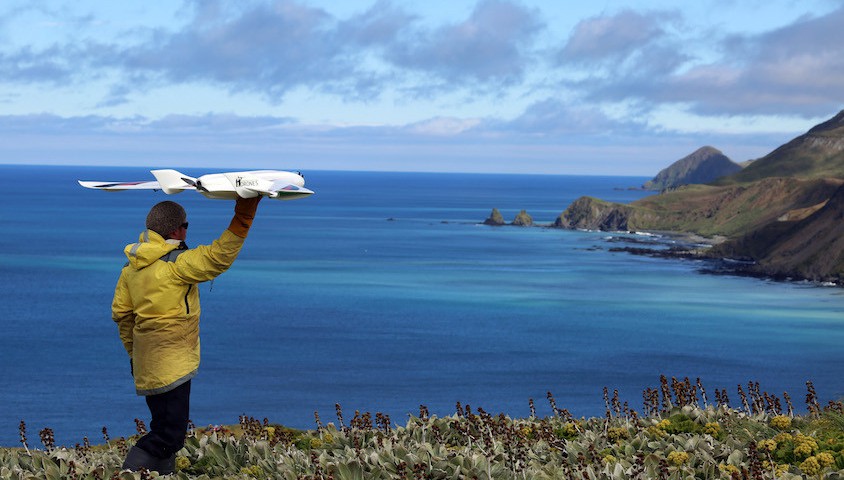A new report shows how the use of unmanned aerial vehicles (UAVs) or drones in biological field research may have negative and unforeseen impacts on wildlife and that little work has so far been done in trying to establish these risks.
In releasing their report, environmental researchers from the University of Adelaide’s Unmanned Research Aircraft Facility (URAF) or Adelaide Drone Hub, have called for a code of best practice in using such devices in the field.
Published in the journal Current Biology, the authors include research and PhD candidate at the URAF, Jarrod Hodgson, and Associate Professor Lian Pin Koh, who is director of URAF and founding director of the non-profit organisation ConservationDrones.org.

A Sumatran elephant (Elephas maximus sumatranus) in North Sumatra viewed from above by UAV. Photo: Lian Pin Koh.
In a statement released to coincide with the report’s publication, Hodgson said that quite often the effects of a drone on a given animal may not be immediately obvious.
“Even though an animal might not appear to be disturbed, it could be quite stressed – for example, a bird may choose to remain near a UAV even when stressed because it is incubating an egg or protecting its hatchling,” he said. “It is likely that animal responses vary depending on a variety of factors including the species, environmental and historical context, as well as the type of UAV and its method of operation.”
As a result of these concerns, Hodsgon and Koh have provided a number of recommendation to be used as a framework for developing a code of practice for the use of drones in research and conservation, with the stated aim of “mitigating or alleviating potential wildlife disturbance”.
The recommendations include:
- Adopting a precautionary principle in lieu of evidence
- Utilising institutional animal ethics processes to provide oversight
- Complying with civil aviation regulations; regular maintenance and training
- Selecting appropriate UAVs for the job
- Exercising minimum wildlife disturbance flight practices, and ceasing operations if they are disruptive
- Publishing detailed reports of methods and results
“In a time of unprecedented change, such techniques will assist in understanding, managing and conserving our planet’s biodiversity; and maximise the potential of UAVs as a powerful, low impact ecological survey tool,” Hodgson said.
As the consumerisation of these technologies continue, the potential threat to wildlife continues to increase. However, the recommendation of a strict code of use for researchers will only address one small part of a growing concern, with civil aviation legislation also required to minimise the threats posed by hobbyist and commercial use.


